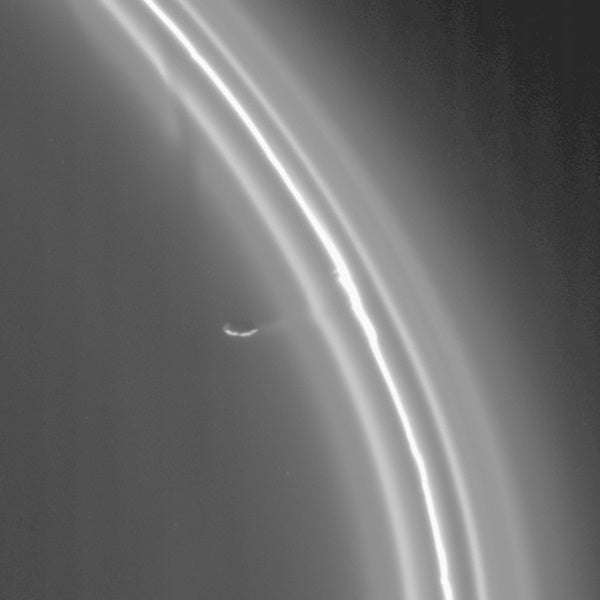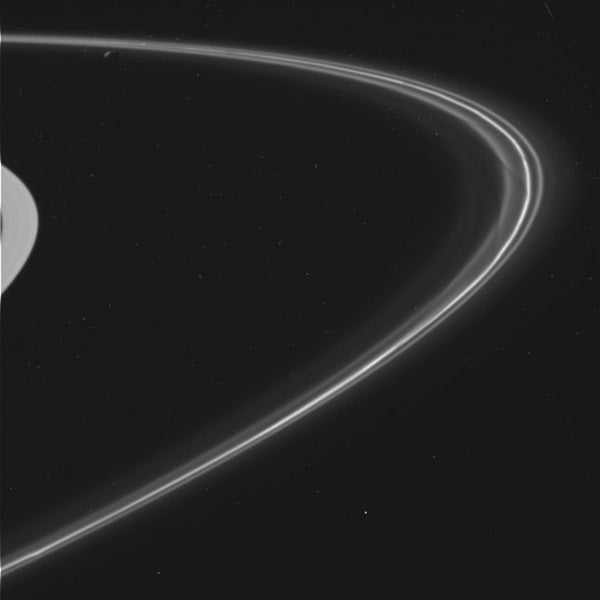Saturn’s faint outer ringlets have been a source of fascination since the Voyager spacecraft flybys in the early 1980s first showed them to have mysterious kinks and twists. While scientists think these rings are gravitationally corralled and kept in line by neighboring small moons, interactions between one particularly tangled strand known as the F ring and a small moon named Prometheus have remained a puzzle. New high-resolution photos beamed back from the Cassini spacecraft now orbiting Saturn are revealing even stranger structures never before seen in any planetary ring.
The latest images show what look like bare channels carved out within Saturn’s F ring. Also, streamers of ring material appear to fly off periodically toward the 60-mile-wide (100 kilometers) Prometheus, which lies just inside the twisted ringlet.
Cassini has seen the streamers, which give the ring its knotted appearance, on previous passes. Astronomers think Prometheus’ gravity pulls sand-size rock and ice material away from the ring every time the moon’s elliptical orbit brings it in for a close encounter.
A team of researchers at the University of London, England, working with computer models of hundreds of thousands of virtual ring particles, has created a simulation of this ring-moon interaction. The model helps explain features seen in the latest images of the gas giant’s outer ring. “The models are in excellent agreement with structures observed in the Cassini images,” says team member Carlos Chavez.
“It is like a crowd of people walking in a number of lines in the same direction down a street. Suddenly, someone else comes from the other side of the street and collides with a few of them. He then tells them to come with him, and walks away. Only people in the closest lines follow him, which produces gaps in the crowd. However, they return back to the main group shortly afterwards,” explains Chavez.
Presenting his team’s results at the 2006 Royal Astronomical Society’s National Meeting, held last week in Leicester, England, Chavez also revealed that less than 1 percent of the stolen ring particles actually end up colliding with Prometheus. This is a surprisingly low number, as astronomers previously thought the moon was bombarded by most of the material pulled out of the F ring.
Because Prometheus has a synchronous rotation — the same face is locked toward Saturn — the research team suspects this ring-moon interaction affects the satellite’s surface albedo, or reflectivity. Already, their computer model suggests these collisions occur on the moon’s trailing face and around the equatorial region.
The team hopes to get a ringside seat with Cassini and see if its predictions are correct in 2009, when one of the most dramatic encounters occurs. That’s when Prometheus will be farthest from Saturn, and the nearby particles of the F ring will be closet to Saturn — and the moon and ring will be closest to each other.











